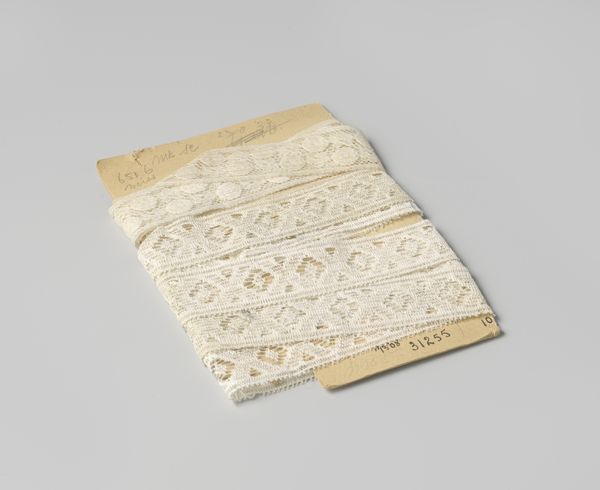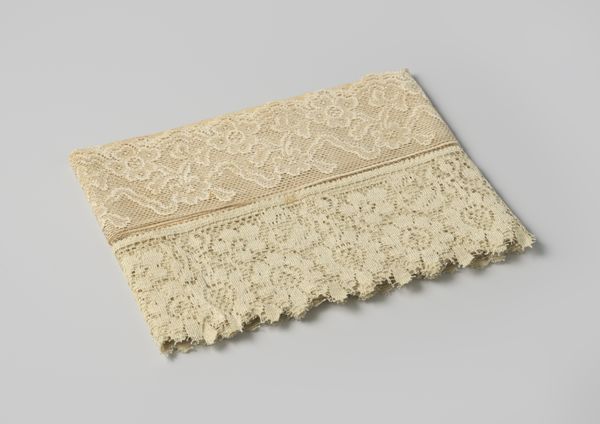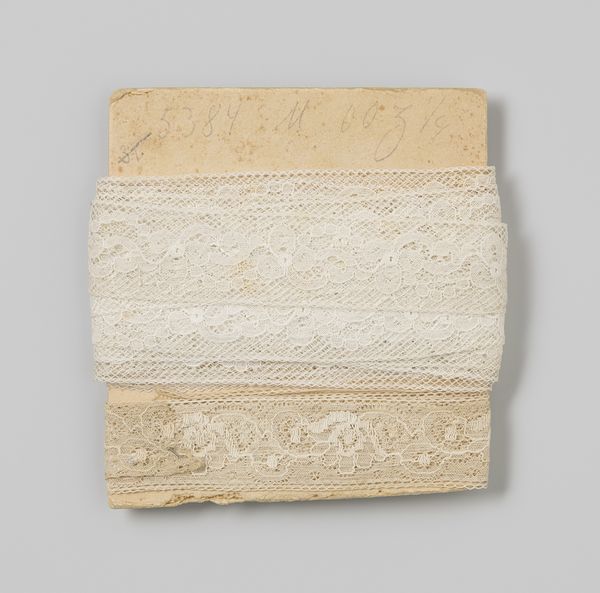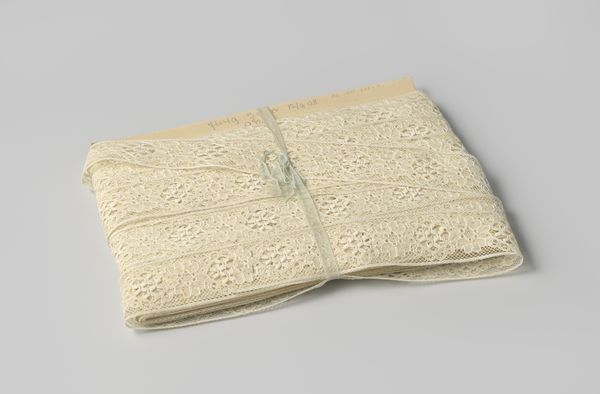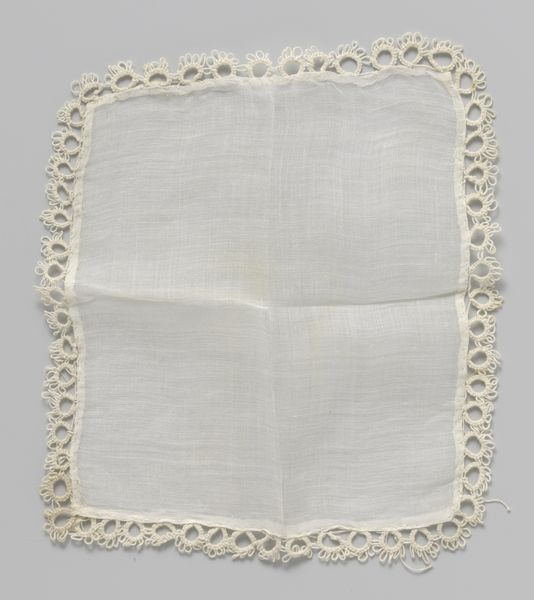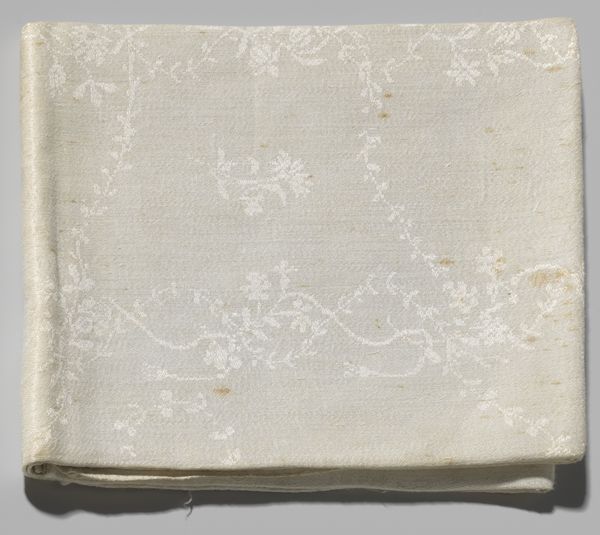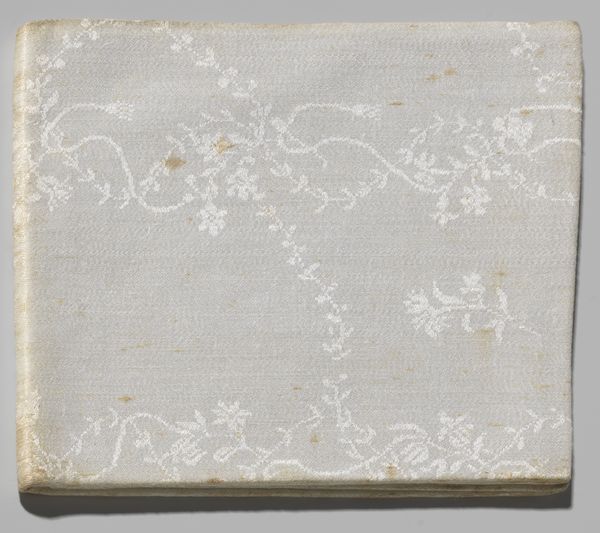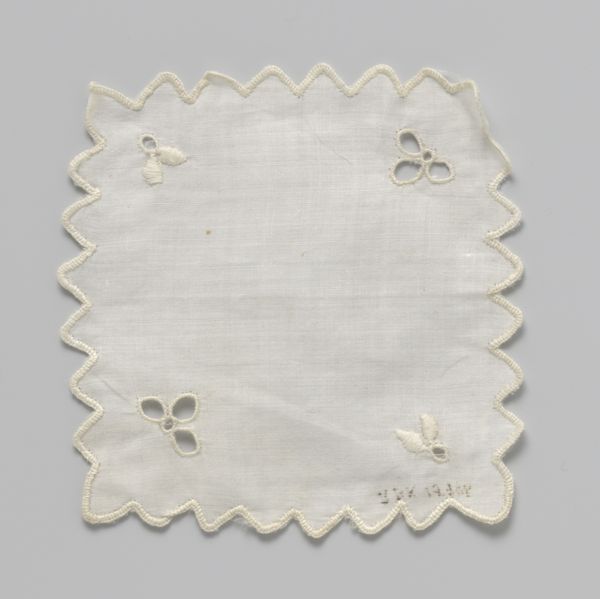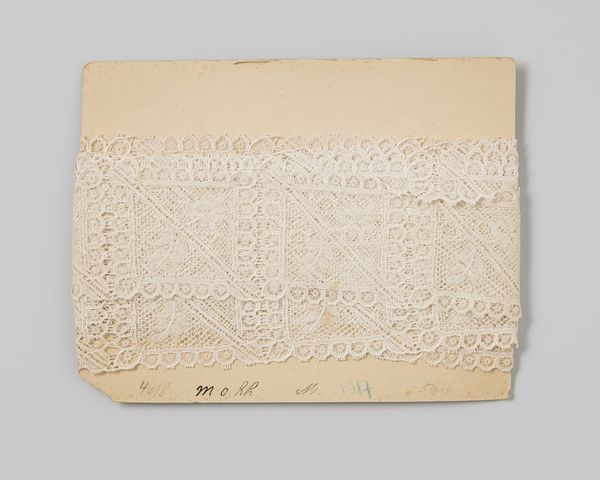
Strook witte kant met één rechte zijde, de andere zijde is geschulpt en gepicoteerd, op karton c. 1925
0:00
0:00
gustavschnitzler
Rijksmuseum
textile, photography
#
still-life-photography
#
textile
#
photography
Dimensions: width 11 cm, length 21 cm, width 17 cm
Copyright: Rijks Museum: Open Domain
Editor: So, this is a photograph of a strip of white lace on a piece of cardboard, taken around 1925. It's currently at the Rijksmuseum. I’m really drawn to how it elevates something so seemingly simple. What story do you think it's trying to tell? Curator: This photograph isn't just about showcasing lace. It's a relic of a specific historical context. The 1920s were a transformative period for women. The rise of photography as an artistic medium coincided with these shifting social roles, and everyday objects—especially those associated with domesticity and femininity, such as lace—took on new layers of meaning. How do you think this piece plays into the traditional versus the modern, given those factors? Editor: Well, it feels…almost defiant? Lace has been associated with the wealthy elite, right? Displaying a photograph of it feels like it’s commenting on those roles, but it doesn't explicitly reject them either. Curator: Precisely! By isolating this fragment of lace and presenting it in a fine art format, the artist is encouraging us to consider the economic implications of this traditional craft. Also, consider that photographs from this time were not nearly as easily accessible as they are now. What do you suppose that may have suggested to audiences then? Editor: That makes total sense. I see now that It highlights that social power by transforming such a delicate craft into something permanent. Almost like advertising, or perhaps making accessible, this previously exclusive craft? Curator: Exactly. It becomes about making a statement about the state of things as much as it is an artistic composition. It's amazing how an image so seemingly simple on the surface has embedded within it all those elements and interpretations, don't you agree? Editor: Absolutely. I hadn't thought about the cultural context so directly influencing the interpretation of a piece of art like this. This has really changed my perspective on photographs of common objects!
Comments
No comments
Be the first to comment and join the conversation on the ultimate creative platform.
